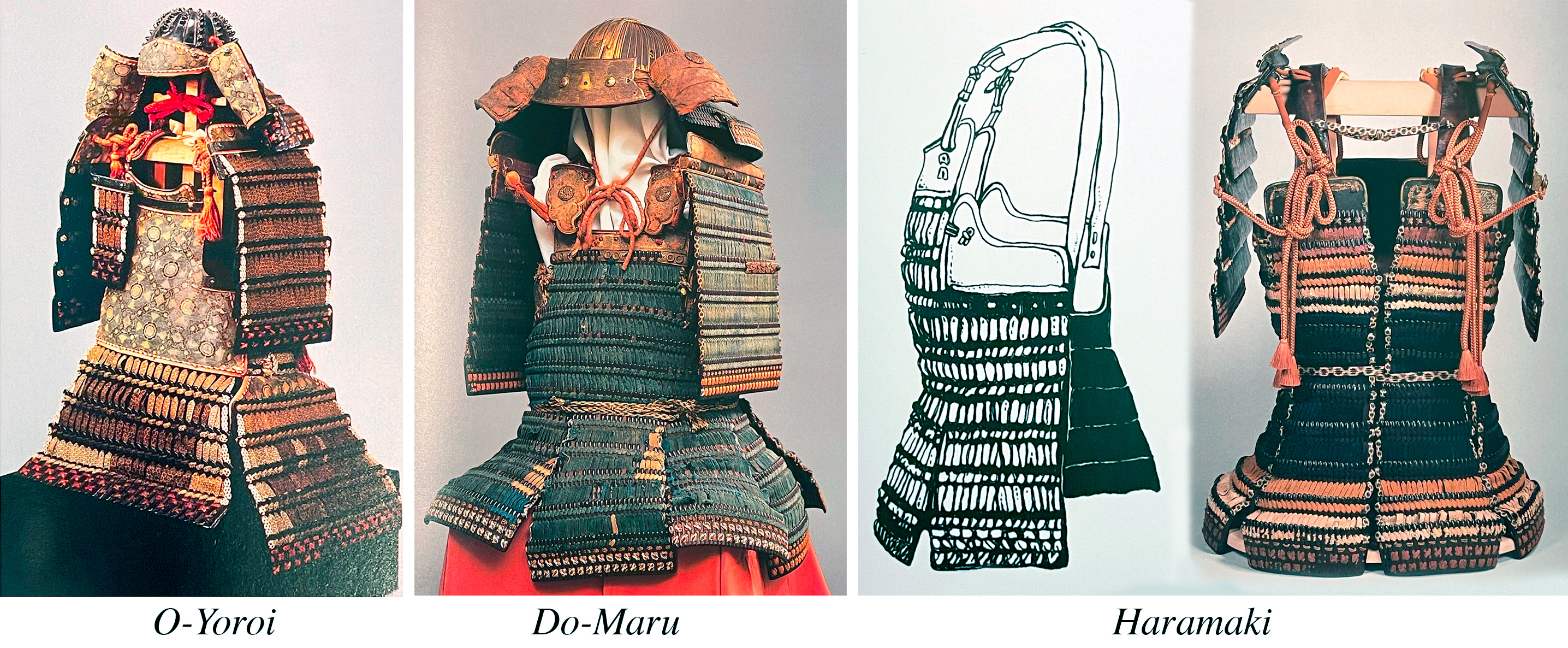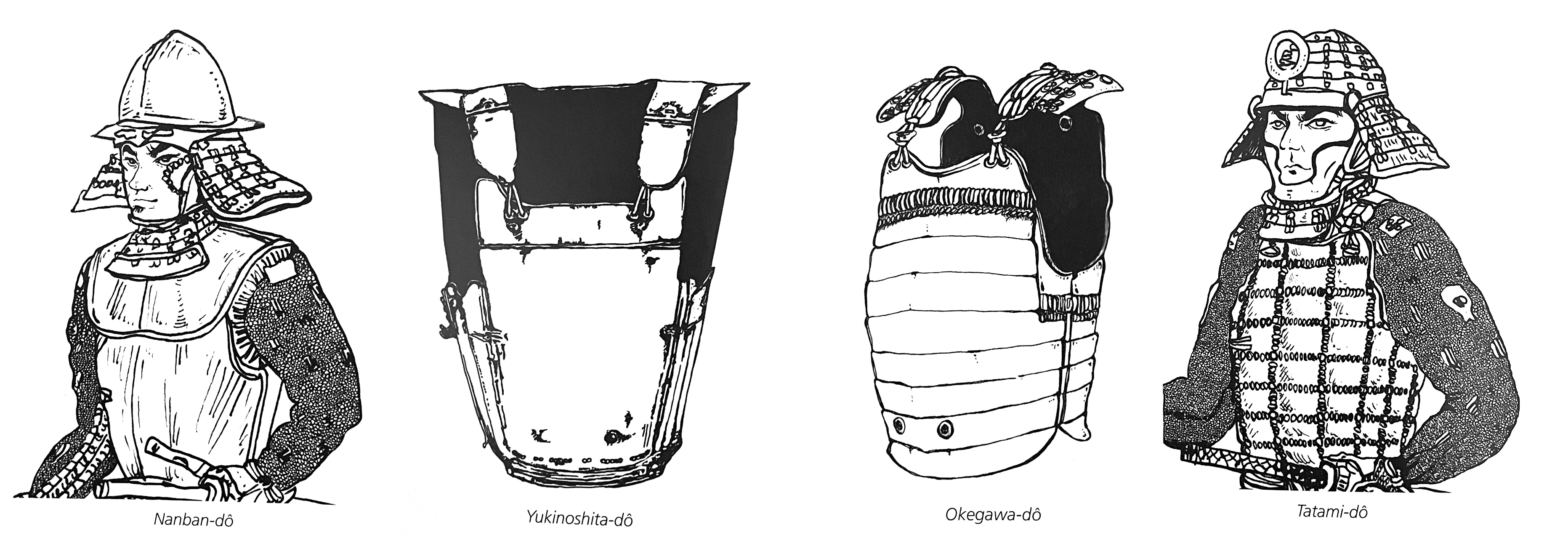Dō: A brief history of the Japanese cuirass
The dō, the cuirass of samurai armor, underwent many changes over the centuries, gradually adapting to innovations in the battlefield; some of the key ideas, however, persisted for centuries in the minds of Japanese armorers and already in the tanko, the first known model of armor, we can find, at an early stage, the archetypes on which the armor would be built during the following centuries: metal plates, rivets and bindings.
Towards the tenth century, during the Japanese Middle Ages, the advent of new techniques in the art of war forced the armor makers to modify some parts of the suit of armor. With the arrival of horse-riding archers, a new armor was created, the ō-yoroi, equipped with more reliable and effective protections made with a new type of construction. It is in this period that we see the introduction of the hon-kozane system, a complicated but efficient method for lacing plenty of small metal plates together: the result was a flexible, but at the same time resistant, cuirass. The dō of the ō-yoroi was made in a single element but it did not cover the whole torso and was therefore combined with another element, the waidate, a large plate that completely protected the samurai's right side. Since most of the fighting in this period took place using bows and arrows, the dō of the ō-yoroi was generally covered with a decorated leather covering (tsurubashiri), so that the bowstring would not get stuck in the weft of the platelets.
After the attempted Mongol invasions of the 14th century, Japanese armorers had to adapt the armor to the new military requirements. Noting that the Mongol armies were efficiently fighting with infantry phalanxes and that their light armor was much more effective in foot combat, the Japanese armorers decided to update their construction techniques. The ō-yoroi was then modified to be worn on foot and not on horseback: the dōmaru and the haramaki have therefore a construction similar to the previous model but they are lighter - made with thinner plates - and allow more agile movements. Also these two types of armor were composed of a single flexible element, which could be fastened respectively on the side and on the back. The tsurubashiri was also left out, being now obsolete after the abandonment of bows and arrows.
With the beginning of the Sengoku era, in the 16th century a new type of samurai armor was finally established, called tōsei gusoku (literally "modern armor"). For this type of equipment, which will remain in use for the entire Edo period, different types of dō can be distinguished, depending on the construction. The most common are the following:
- Tachi-dō. It is one of the first armors to be characterized by a hinged structure, with the two parts built in kiritsuke-kozane. The big difference with hon-kozane armor, of which it retains the appearance, is therefore the construction in two rigid parts joined by a metal hinge. For this reason it is often also called ni-mai-dō, or “two-plate dō”.
- Nuinobe-dō. With the same construction as the tachi-dō, this type of armor featured a system of iyo-zane plates with sugake odoshi lacing instead of kiritsuke-kozane.
- Okegawa-dō. To further simplify the construction, this cuirass was constructed with long plates riveted to each other, without the need for visible lacing. In most cases, the plates of the okegawa-dō were arranged horizontally (yoko-hagi), but there are also some with vertical arrangement (tate-hagi); in both cases, the aesthetic value of these dō was often accentuated by the use of shaped plates and rivets. A variant of okegawa-dō, known as hotoke-dō, was covered with a thick layer of lacquer that hid the joints of the plates, giving the armor a look with a single flat surface.
- Mogami-dō. In this case the long horizontal plates are not riveted but tied in sugake odoshi. Each plate also has a raised edge and the construction of the armor is in five sections.
- Nanban-dō. With the introduction of firearms in the late Sengoku, Japanese gunsmiths were forced to find new formulas to protect warriors. Among the various “bulletproof” armors that were devised during this period, the nanban-dō is one of the oldest. This was inspired by the armor worn by the Nanban (literally “southern barbarians”), the Portuguese explorers and merchants who had recently arrived in Japan. In fact, these wore armor with a particular shape, called "pigeon breast", which had a central ridge that would deflect bullets from matchlocks.
- Yukinoshita-dō. If the generic term gomai-dō means an armor composed of five plates, this specific model is instead named after the blacksmith who developed it. It is a dō made entirely of metal with very heavy parts, characterised by the absence of fabric lacing.
- Tatami-dō. On this cheaper cuirass, rectangular plates are hinged together by chainmail.


Copyright © 2016 - giuseppe piva - VAT: 05104180962

